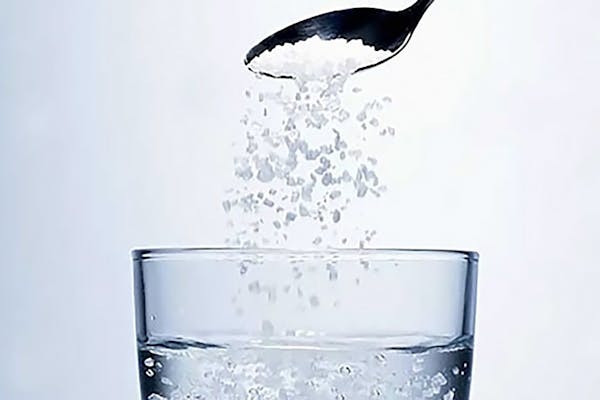Side Effects of Keto Diet Plan
The keto flu
Symptoms of the keto flu4:
- Fatigue
- Headache
- Irritability
- Difficulty focusing ("brain fog")
- Lack of motivation
- Dizziness
- Sugar cravings
- Nausea
- Muscle cramps
The cause
The keto flu occurs as your body transitions from burning sugar to burning fat for most of its energy needs.
Switching from a high-carb diet to a very-low-carb diet lowers insulin levels in your body, one of the primary goals of a ketogenic diet.5
When insulin levels are very low, your liver begins converting fat into ketones, which most of your cells can use in place of glucose.6 When your body is mainly using ketones and fat for energy, you're in a state of ketosis.
However, it takes your brain and other organs some time to adapt to using this new fuel. When your insulin levels drop, your body responds by excreting more sodium in the urine, along with water.7 Because of this, you'll likely find yourself urinating a lot more often in the first week or so of keto eating.
This change is responsible for some of the rapid – and usually very welcome! – weight loss that happens in the early stages of a keto diet. However, losing a lot of water and sodium is responsible for many of the unpleasant symptoms of keto flu.
It's well known that response to the keto transition is very individual. Some people may feel fine or slightly tired for a day or two after starting keto. At the other extreme, there are those who develop symptoms that strongly impact their ability to function for several days.8
However, the keto flu doesn't have to be unbearable for anyone if the proper steps are taken to remedy it.
The cure for the keto flu
Symptoms of the keto flu usually disappear by themselves within a few days to weeks, as the body adapts. But rather than suffering needlessly during this time, why not address the cause and start feeling better right now? The first step is by far the most important, and it's often all that's needed.
1. Top tip: increase your salt and water intake
 Since loss of salt and water is responsible for most keto flu issues, increasing your intake of both can help reduce your symptoms significantly and often eliminate them altogether.9
Since loss of salt and water is responsible for most keto flu issues, increasing your intake of both can help reduce your symptoms significantly and often eliminate them altogether.9
During the first few weeks of your keto lifestyle, whenever you develop a headache, lethargy, nausea, dizziness or other symptoms, drink a glass of water with half a teaspoon of salt stirred into it.
This simple action may alleviate your keto flu symptoms within 15 to 30 minutes. Feel free to do this twice a day or more, if needed.
Or for a tasty alternative, drink consommé, bouillon, bone broth, chicken stock or beef stock — and stir in a spoonful of salted butter, if you like. Or, if you're using low-sodium bone broth or stock, add a pinch or two of salt.
In addition, make sure you're drinking enough water. The larger you are, the more water you'll probably lose in the early stages of keto, and the more you'll need to replace. A good rule of thumb is to drink a minimum of 2.5 liters of fluid every day during your first week of keto.10
This doesn't mean you must drink at least 2.5 liters of plain water in addition to your other beverages. Although drinking plenty of water is important, coffee and tea will contribute toward your fluid intake as well.11 Still, try to keep your caffeine intake modest (about 3 cups of coffee per day), as high amounts may potentially increase loss of water and sodium.12
Getting enough water, sodium and other electrolytes like magnesium and potassium can also help with another issue people often experience in the early stages of a keto diet: constipation.
Learn more about electrolyte supplementation on a keto diet
2. More fat = fewer symptoms
Increasing salt and fluid intake usually resolves most of the keto flu side effects. However, if you continue feeling poorly after following those recommendations, try eating more fat.
Due to decades of misinformation about fat being unhealthy, fat phobia is common among people who are new to low-carb eating.13 But if you sharply cut back on carbs without upping your fat intake, your body will think it is starving. You'll feel tired, hungry and miserable.14
A well-balanced keto diet includes enough fat to ensure you're not hungry after a meal, can go for several hours without eating, and have ample energy.
Be sure to increase your intake of fat at the start of your keto journey until your body adapts to using fat and ketones for most of its energy needs. Once you're fat adapted, let your appetite guide you in cutting back on fat a bit and seeing how much you need to feel satisfied.
In short: When in doubt, add butter or other fat to your food. And check out our top 10 tips for boosting fat intake. You can also follow our keto recipes, which have enough fat in relation to carbs and protein.
3. Slower transition
Has adding more water, salt and fat not helped very much? Are you still feeling achy, tired and off?
We recommend you try to endure keto eating for a few more days until the symptoms pass. Research suggests that a very-low-carb diet is best for weight loss and metabolic issues like type 2 diabetes.15Keto flu symptoms are only temporary – they'll be long gone once you're a fat burner.
You can, however, slow down the transition to ketogenic eating by consuming a few more carbs, such as following a more moderate low-carb diet that provides 20 to 50 grams of carbs a day.
Eating slightly more carbs may potentially slow down weight loss and result in less rapid and dramatic health improvements.16 However, it can still lead to better health, especially if you are cutting out sugar and processed foods. And keto flu will no longer be an issue.
Once you've adapted to low-carb eating, feel free to try eating less than 20 grams of carbs again to see whether your body prefers this or slightly higher carb intake.
4. Take it easy with physical activity
Although many people find that their energy and stamina improve on a keto lifestyle, trying to do too much in the early stages can worsen keto flu symptoms.17
Well-known ketogenic researcher Dr. Steve Phinney has conducted studies in endurance athletes and obese adults demonstrating that physical performance decreases during the first week of very-low-carb eating.18 Fortunately, his research also shows that performance typically recovers — and often improves — within 4 to 6 weeks.
Walking, stretching, or doing gentle yoga or other mind-body exercise should be fine and may even help you feel better. But when your body is already under stress from trying to adapt to a new fuel system, don't place an additional burden on it by attempting any type of strenuous workout. Take it easy for the first few weeks and then slowly increase your exercise intensity.
5. Don't consciously restrict food intake
Some people find that they aren't very hungry the first week of keto because they are nauseated or have a headache that reduces their appetite. Yet others may get pretty hungry and worry that they're eating too many calories to achieve the kind of fast weight loss they've heard about.
The Atkins diet begins with induction, its strictest phase that allows for maximum fat burning and getting into ketosis quickly. On this diet, as long as carbs are restricted to 20 or fewer grams per day, you can eat as much of the allowed foods you need to feel full.
It's not a good idea to focus on calories when you're trying to become keto adapted. Letting yourself get hungry or stressing about the amount of food you're eating might even make keto flu symptoms worse.19 Once you're steadily in ketosis, your appetite will likely go down, and you'll naturally end up eating less.20
Eat as much of the allowed foods as needed until you're no longer hungry, and have keto snacks like hard-boiled eggs available in case hunger strikes between meals. On the other hand, make sure to avoid getting overly full by eating slowly and paying attention to hunger and fullness signals.
Dr. Eric Westman's tips
MEMBERS ONLY
Learn more about getting the best results and the least side effects on a ketogenic diet from world renowned keto expert Dr. Eric Westman.
Side Effects of Keto Diet Plan
Source: https://www.dietdoctor.com/low-carb/keto/flu-side-effects